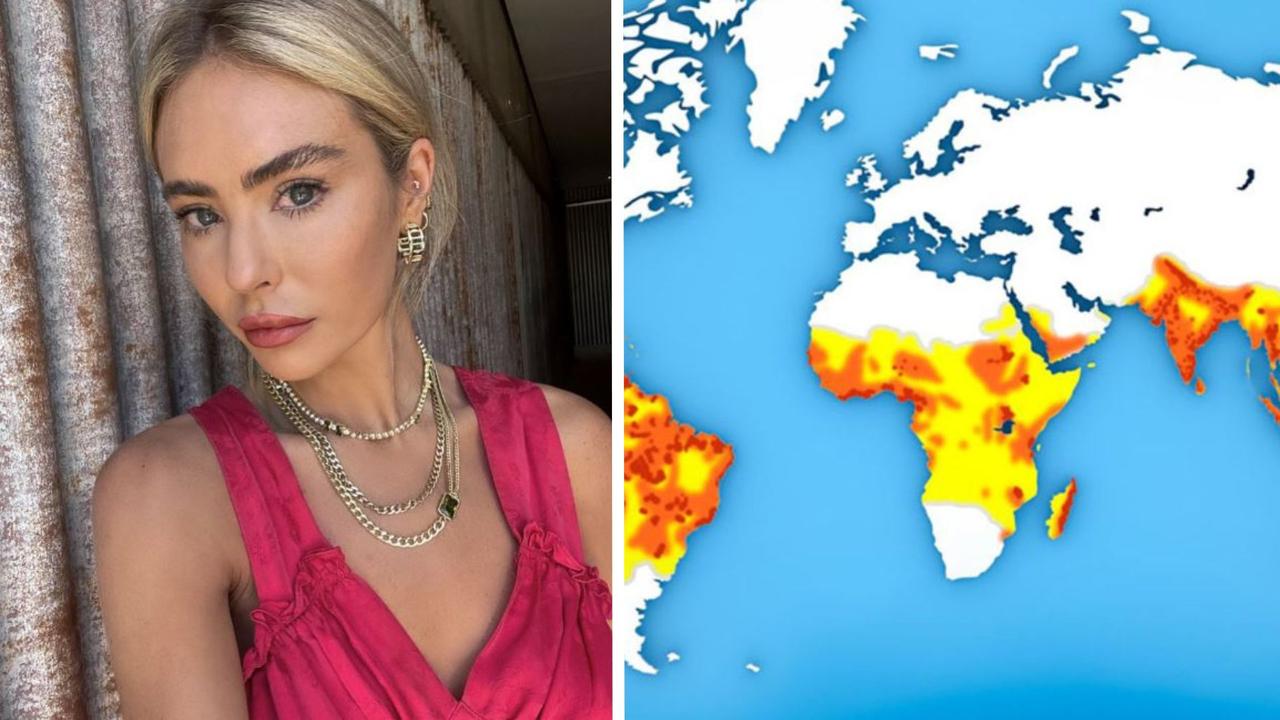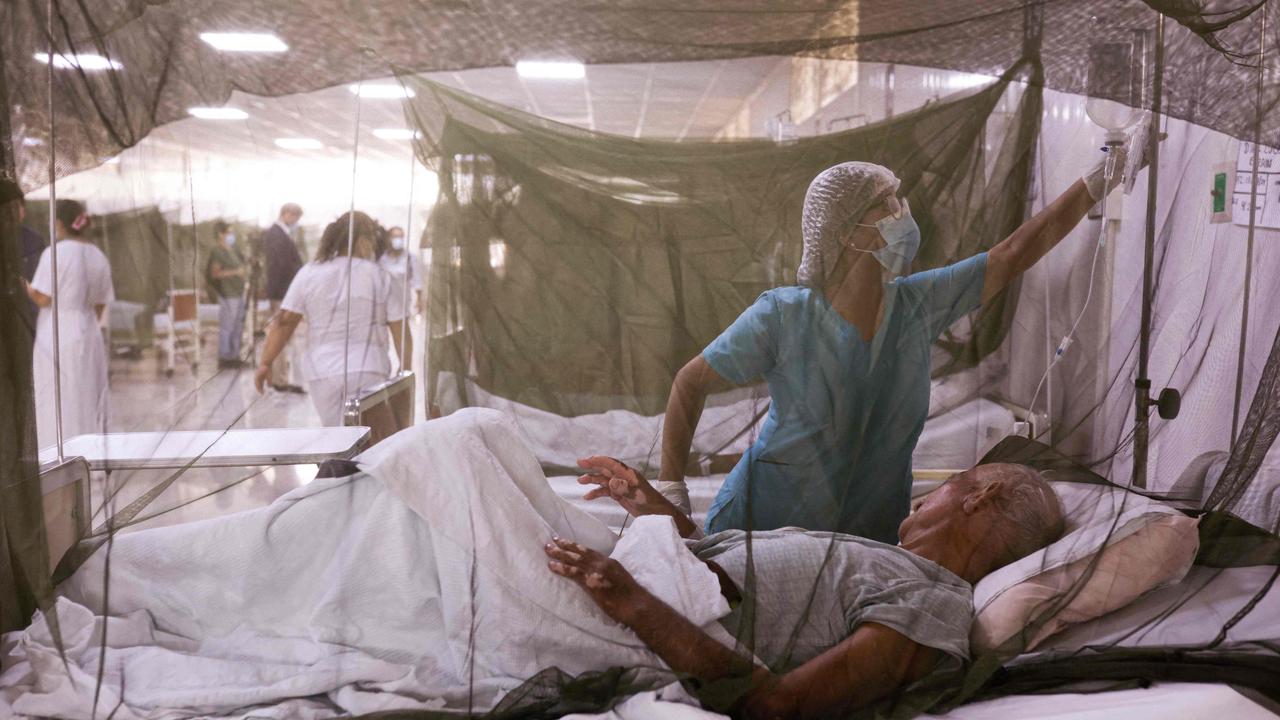Deadly viral infection doubles in popular tourists spots for Aussies
Known as the ‘bone crushing fever’, it made one Aussie model feel like she’d been “hit by a bus”. Now, the virus is occurring in numbers never seen before.

Australian travellers are being warned of a sharp increase in a potentially deadly virus, commonly known as the ‘bone crusher fever’ — with more than five million people now contracting the condition – and cases almost doubling in 2024 alone.
According to the World Health Organisation (WHO) and 1Cover Travel Insurance, dengue fever — a potentially fatal acute infectious disease caused by a virus and transmitted by the bite of an infected mosquito — has seen a rise likely due to increased post-Covid travel and the El Niño climate cycle.

Earlier this week, the Department of Foreign Affairs and Trade (DFAT) reported that dengue fever outbreaks are happening globally, with a “higher-than-usual number of cases” being witnessed in Africa, Asia, Central and South America and The Pacific. Popular destinations for Australian travellers, such as Bali, Indonesia, Malaysia and Singapore, were also noted as seeing a significant spike in the virus.
According to the Tropical Institute, Bali and Brazil have seen some of the biggest spikes globally, with records indicating both regions had experienced its largest and most severe outbreak in history as of late March 2024.
The National Ministry of Health in Brazil reported 1.9 million dengue virus infections since the beginning of the year.

The typical ‘flu-like symptoms’ that present with dengue fever include a sudden fever, chills, a severe headache with pain behind the eyes, swollen glands, muscle and joint pain, extreme fatigue, abdominal pain, nausea and vomiting. Some cases, a faint red rash will develop on the upper body around the third day.
Natalie Smith, spokesperson for 1Cover travel Insurance, says that in some instances, the cost of catching dengue fever abroad can be extreme.
“Contracting dengue fever overseas can have serious implications on both your health and finances,” she explained.

“Even in moderate cases, the average cost to treat and assist travellers with dengue fever is about $7,000.”
Ms Smith notes that in some instances, dengue fever claim costs can soar into the tens of thousands.
“We recently assisted a couple in their twenties, both sick with dengue fever, which led to a $20,000 claim.”
Aussie model’s $52,000 Dengue Fever ordeal
In 2015, Aussie model Emily Gurr, then 21, became seriously ill with Dengue Fever while visiting Bali, which she got from a mosquito bite about a week earlier in Vietnam.
At the time, she said she woke up one morning suffering from what she initially thought was a bad hangover, but things went quickly downhill.
“I felt awful, like a bus had hit me. I didn’t know what it was but by the night time it was excruciating,” she told news.com.au.


After about 10 days in hospital the call was made to airvac Ms Gurr out of Bali as her condition went downhill.
She was flown to Darwin for treatment, and her mother was flown in to be with her.
The cost of the emergency evacuation alone was about $52,000.
With Bali remaining a popular holiday spot for Aussies year-round, Ms Smith said Dengue Fever was something to beware — despite most cases being mild
“At least one-in-20 cases can become severe, leading to shock, internal bleeding and even death,” she warned.


“While there is no specific treatment for dengue fever, patients may require hospitalisation, IV treatment, and in some cases, a blood transfusion.
“If you’re holidaying in a tropical region and experience a high fever, severe headache and/or nausea you should seek medical help immediately.”

There is no current vaccine to prevent Dengue Fever, with experts saying the best way to avoid the virus is to use insect repellents containing DEET, covering up as much as possible with light clothing (even in warm conditions) and to avoid peak mosquito periods (including sunrise and before sunset).
Experts reveal what’s causing Dengue Fever cases
The increase in dengue fever cases coincides with a significant surge in outbreaks to popular travel destinations. In April, Samoan health authorities reported over 200 cases since November of the previous year. Meanwhile, Western Australia’s health department documented 138 cases of dengue fever this year, primarily contracted in Indonesia. According to 1Cover, Indonesia alone registered over 60,000 cases of dengue fever in 2024.

According to WHO, from 2000 to 2019, there was a ten-fold surge in reported cases worldwide increasing from 500,000 to 5.2 million cases. The year 2019 marked an unprecedented peak, with reported instances spreading across 129 countries.
“In 2023, an upsurge in dengue cases have been observed globally, characterised by a significant increase in the number, scale, and simultaneous occurrence of multiple outbreaks, spreading into regions previously unaffected by dengue,” the WHO said in a statement.



Experts say heavy rains and high temperatures recorded in recent months are believed to have contributed to this increase in cases, with warmer and wetter climates creating optimal conditions for the yellow fever mosquito.
More Coverage
“Most of the cases we’ve seen have come from South-East Asia and specifically Bali, Thailand and the Philippines,” Ms Smith said.
“Given Bali’s particular popularity, we are urging travellers to take preventive measures to reduce their risk of exposure and ensure they have travel insurance.
“This recent outbreak only adds to the many reasons travellers shouldn’t undermine the value of travel insurance. Despite their allure, tropical destinations have their share of risks. Don’t assume it won’t happen to you and make sure you’re covered. Your future self will thank you.”






